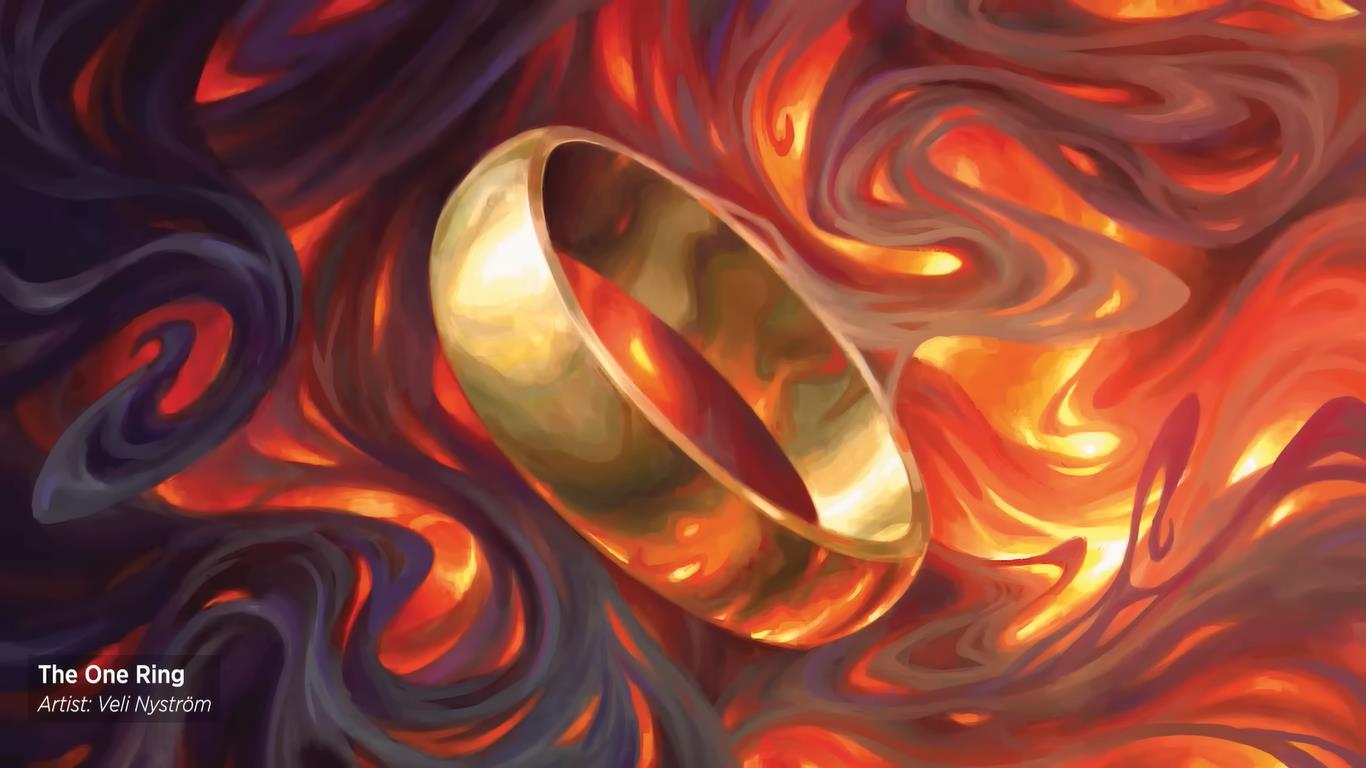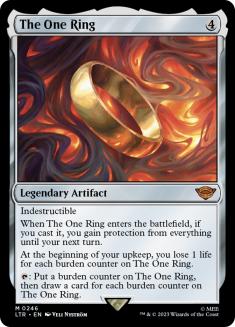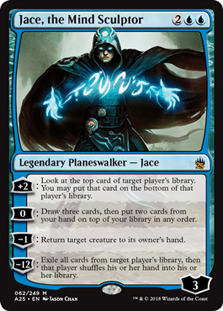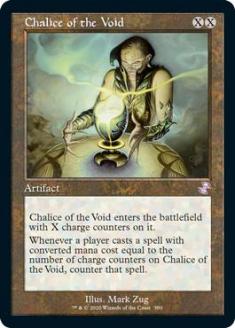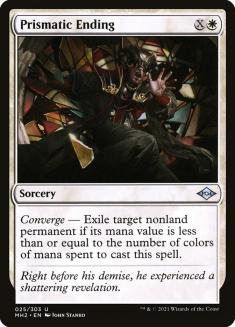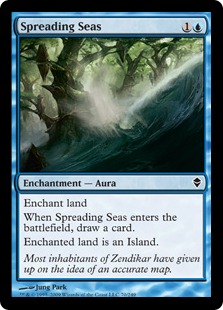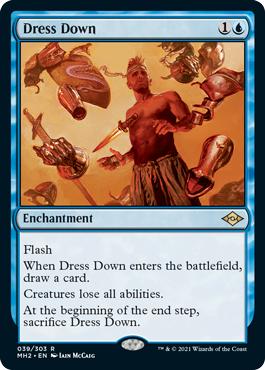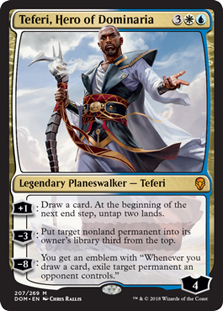Modern has been the one format where control has remained viable throughout the years. Even when the disruption was weak, somehow Path to Exile and Logic Knot found a way to keep us in the game. We have seen Jeskai, Esper, Dimir, and Azorius rise to the top of the Modern ranks at various stages of history. Each of these decks had to make the magic happen with cards that lacked power, which was a substantial challenge in a non-rotating format.
Times are different now, and control has benefited from recent releases. The other control archetypes have largely yielded to Azorius Control (Kaheera), which continues to produce results. This deck is a blast to play and has the firepower needed to handle any metagame configuration that Modern can dish out. The powerful disruption options keep all threats at bay and the win conditions quickly end the game.
In its current state, I was not expecting much out of The Lord of the Rings: Tales of Middle-earth, but that quickly changed with The One Ring.
The Power of the Ring
I put the legendary artifact as the second-best card in my set review, which turned out to be foolish. The One Ring has become a format staple overnight, with competitive players frantically swapping out their weakest cards to have a taste of its power. The card advantage is what initially brought me in before the set’s release, but it was the invulnerability that fully sold me. All decks benefit in some way when given a turn off from aggression; however, no deck enjoys it more than control. Control reduces the punishment from a tap-out turn, making it the perfect home for The One Ring.
The One Ring fits perfectly into the control gameplan, keeping the battlefield relatively clear in the initial turns, resolving it, and then using a two-spell follow-up to manage what arrived after. The turn it is cast leaves the opponent deciding whether to apply more pressure into a potential sweeper or risk having their current battlefield individually picked apart. Cards that put my opponents into positions like this automatically become my favorites because they add barriers to the other side’s victory.
Many have argued that the more powerful and midrange-driven cards become, the less impact players have over who wins or loses. I do somewhat agree with this, as I find myself tapping my resources to play on curve and remove all threats that I possibly can. After the dust settles, I hope that this has led me to a win. Back in the day, being selective with disruption and building decks to specifically tackle the top decks was the strategy, not simply playing the best cards on curve. With that being said, I think Magic is still the best game out there; it is simply different from what it once was.
The List
Tapping out to play The One Ring in Azorius Control (Kaheera) invites that pressure dilemma to the mix and has influenced me to change the deck around to best support it. Many players have removed their least impactful cards to make room, whereas I have made my best effort to fully integrate it as the new card advantage engine.
Creatures (5)
Planeswalkers (5)
Lands (25)
Spells (25)

With control in Modern, there are no objectively weaker cards to easily remove. Trimming down to make room was one thing, but finding areas to support the new four-drop was a bit challenging. The best way to make The One Ring stand out in Azorius Control (Kaheera) is to make sure the early-game defenses are solid and the mid- to late-game curve is light.
Letting Go
The first cut was the hardest, and I had to take a moment to give him a proper sendoff.
Rest in power, Jace, the Mind Sculptor. I had a strong streak of being spot-on with bans and unbans, but I never believed that I had a direct impact on the decision made except with this one. Relentless campaigns for the release of Jace and Stoneforge Mystic eventually lead to the glorious news that he became Modern-legal. At that point, Jace, the Mind Sculptor became a mandatory one- to three-of, even when the Spike community collectively agreed to remove him for Memory Deluge. I stubbornly held on, but now I too must let go.
The One Ring does what Jace, the Mind Sculptor does, but way better. The turn of invulnerability negates much of the life cost that The One Ring imposes, and it sticks around much better than the fragile planeswalker. It continues to produce the cards needed to obliterate the opponent, while dealing a controllable amount of pain to the user.
The Teferi, Time Raveler count has risen to four, providing another outlet to reset the counters and have another turn of protection. Having this safety net continues to raise the power of The One Ring far past Jace, the Mind Sculptor, at least for now. Depending on how outrageous the format gets with this card, we may need to reemploy our iconic planeswalker in the future.
Early-Game Defense
To improve the early-game defenses, I have looped the fourth Prismatic Ending and the third copy of Chalice of the Void to the deck. I have had much smoother gameplay without Chalice of the Void Game 1, due to its poor impact when drawn too late. Each other card in the control arsenal has an immediate impact or redraw. It is still an effect too powerful to ignore, though, instantly locking out certain decks on Turn 2. I remain excited to see Chalice of the Void in the opening hand, and it needs to have a spot in the list.
The fourth Prismatic Ending is a must in Azorius Control (Kaheera) featuring The One Ring. The more awkward starts of using a fetchland to get a white source on Turn 1, followed by suboptimal mana on Turn 2 to cast a spell, usually resulted in a tough setup for the mid-game. I am more comfortable with that series if The One Ring is in hand to provide a strong outlet for card advantage. Having a cleaner battlefield and more life to work with makes it all worthwhile.
Against the Ring
The other big changes fight The One Ring, rather than support it. I have always disliked Dress Down, and it was an easy cut to make. Spreading Seas returns to Azorius Control (Kaheera) to replace it, giving control additional game against Mono-Green Tron. The One Ring will find itself in cahoots with Urzatron lands, providing the colorless powerhouse a turn off from getting slaughtered and valuable card advantage. If there is any uptick in Mono-Green Tron, I want to have some way to combat it.
Once, Azorius Control (Kaheera) slapped around the big mana decks. On the back of Spreading Seas and Field of Ruin, it was an easy titan to take down. Since control has changed, the matchup has flipped to be heavily in their favor. Having Spreading Seas does give control a few percentage points back and is not terrible in other matchups. There are still multiple decks using Urza’s Saga and/or depending on their finite sources of non-blue mana to win. It can completely derail an opponent very early in the game, while drawing the user a card. In addition, it can have interactions with Teferi, Time Raveler when there is not a better target.
The number of ways to remove The One Ring is excessive in Azorius Control (Kaheera). When resolved, Teferi, Hero of Dominaria; Prismatic Ending; Teferi, Time Raveler; and Leyline Binding can remove it from the battlefield. Having only exile and bounce effects is a perk that not many decks can claim. Even better, Azorius Control (Kaheera) can effectively prevent it from resolving. I added a copy of Force of Negation as another defense mechanism against it and the decks that use it. In the end, this deck is best at using, and defeating, The One Ring.
Changing Numbers
The other changes made to Azorius Control (Kaheera) were in the quantity department. It was hard to justify playing two copies of Teferi, Hero of Dominaria with three copies of The One Ring. As with Jace, the Mind Sculptor, Teferi, Hero of Dominaria may ultimately be replaced. It has a few things going for it, including the mana slot it is in. Not competing with The One Ring on Turn 4 is strong, in addition to its high loyalty and better removal ability. Teferi, Hero of Dominaria is still a beast on the battlefield, drawing cards, untapping lands, handling threats, and ending with a game-ending ultimate. For now, it remains as the one-of captain of Azorius Control (Kaheera).
Dropping the number of Shark Typhoons down to two was an easy move. Azorius Control (Kaheera) burns through its deck with The One Ring, and having Hall of Heliod’s Generosity allows us to rebuy used Shark Typhoons. The reason three was the perfect number before was how well it fit the game-plan. Using them early to produce threats/blockers and hitting land drops was key, but eventually resolving the enchantment was the easiest path to victory. Most decks in Modern were helpless against a resolved Shark Typhoon, making it vital to draw one in the late-game. With this new draw engine, two copies are sufficient to accomplish this.
The One Ring will continue to shape Modern, and I am happy that Azorius Control (Kaheera) is a direct beneficiary.

